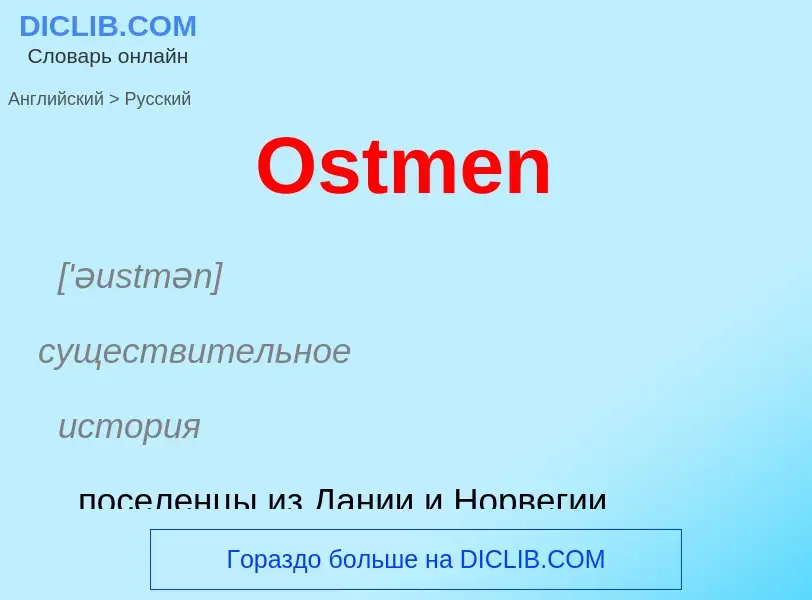Перевод и анализ слов искусственным интеллектом ChatGPT
На этой странице Вы можете получить подробный анализ слова или словосочетания, произведенный с помощью лучшей на сегодняшний день технологии искусственного интеллекта:
- как употребляется слово
- частота употребления
- используется оно чаще в устной или письменной речи
- варианты перевода слова
- примеры употребления (несколько фраз с переводом)
- этимология
Ostmen - перевод на русский
['əustmən]
существительное
история
поселенцы из Дании и Норвегии
обосновавшиеся в Ирландии и Исландии
Определение
Википедия
The Norse–Gaels (Old Irish: Gall-Goídil; Irish: Gall-Ghaeil; Scottish Gaelic: Gall-Ghàidheil, 'foreigner-Gaels') were a people of mixed Gaelic and Norse ancestry and culture. They emerged in the Viking Age, when Vikings who settled in Ireland and in Scotland became Gaelicised and intermarried with Gaels. The Norse–Gaels dominated much of the Irish Sea and Scottish Sea regions from the 9th to 12th centuries. They founded the Kingdom of the Isles (which included the Hebrides and the Isle of Man), the Kingdom of Dublin, the Lordship of Galloway (which is named after them), and briefly (939–944 AD) ruled the Kingdom of York. The most powerful Norse–Gaelic dynasty were the Uí Ímair or House of Ivar.
Over time, the Norse–Gaels became ever more Gaelicised and disappeared as a distinct group. However, they left a lasting influence, especially in the Isle of Man and Outer Hebrides, where most placenames are of Norse–Gaelic origin. Several Scottish clans have Norse–Gaelic roots, such as Clan MacDonald, Clan MacDougall and Clan MacLeod. The elite mercenary warriors known as the gallowglass (gallóglaigh) emerged from these Norse–Gaelic clans and became an important part of Irish warfare. The Viking longship also influenced the Gaelic birlinn or longa fada, which were used extensively until the 17th century. Norse–Gaelic surnames survive today and include MacIvor, MacAskill and (Mac)Cotter.

![Clan MacDonald]], Lord of the Isles Clan MacDonald]], Lord of the Isles](https://commons.wikimedia.org/wiki/Special:FilePath/MacDonald of the Isles (MacIan).jpg?width=200)
![Skuldelev II, a Viking warship built in the Norse–Gaelic community of [[Dublin]] ({{circa}} 1042) Skuldelev II, a Viking warship built in the Norse–Gaelic community of [[Dublin]] ({{circa}} 1042)](https://commons.wikimedia.org/wiki/Special:FilePath/Skuldelev II.jpg?width=200)
